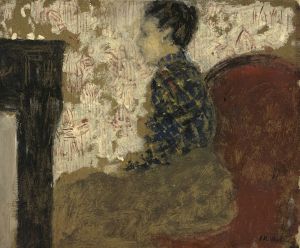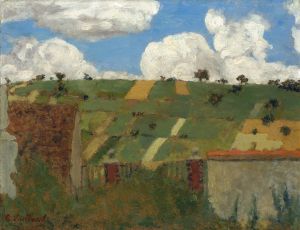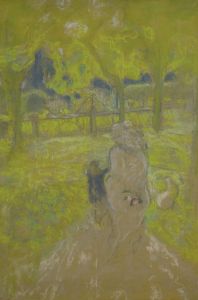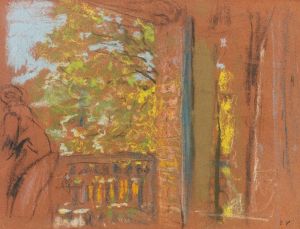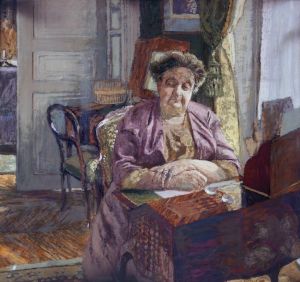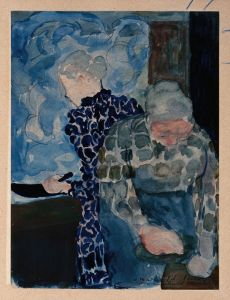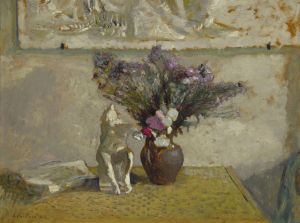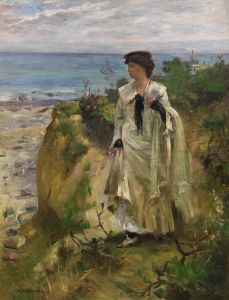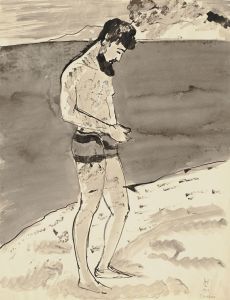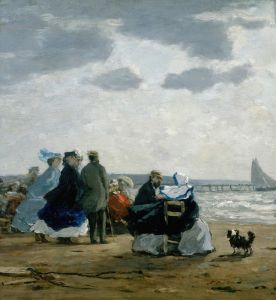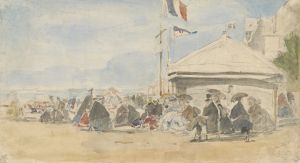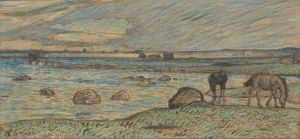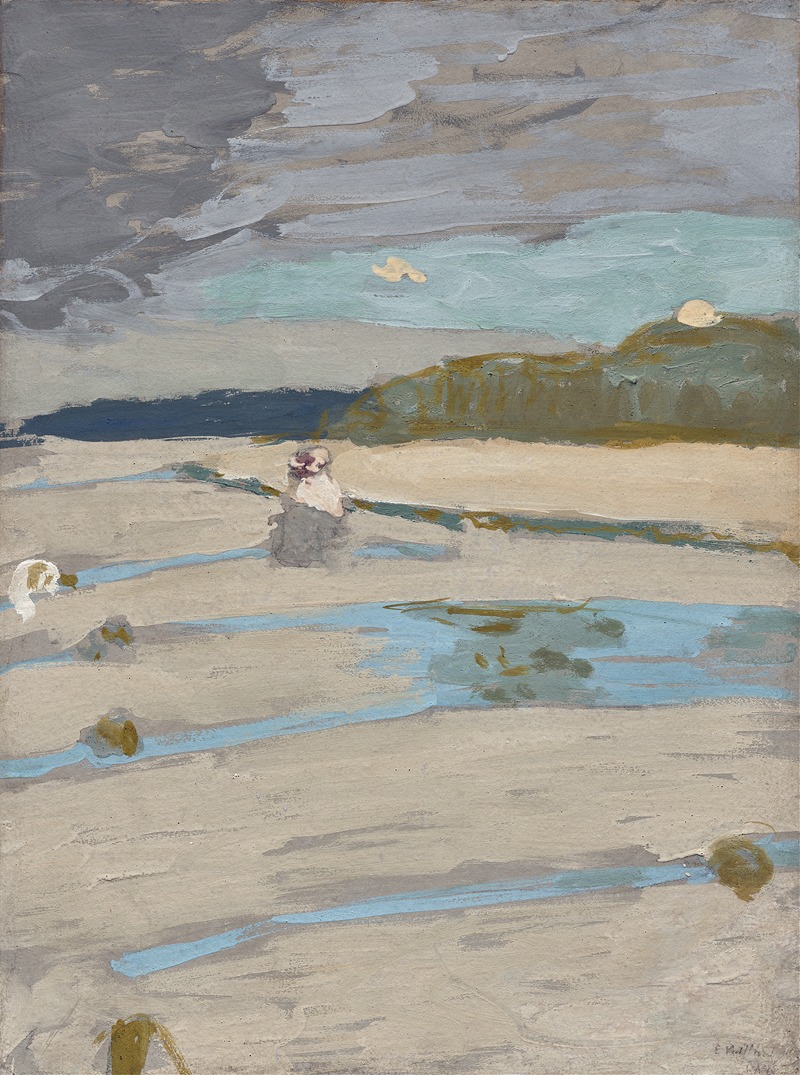
The Beach at Saint-Jacut
A hand-painted replica of Édouard Vuillard’s masterpiece The Beach at Saint-Jacut, meticulously crafted by professional artists to capture the true essence of the original. Each piece is created with museum-quality canvas and rare mineral pigments, carefully painted by experienced artists with delicate brushstrokes and rich, layered colors to perfectly recreate the texture of the original artwork. Unlike machine-printed reproductions, this hand-painted version brings the painting to life, infused with the artist’s emotions and skill in every stroke. Whether for personal collection or home decoration, it instantly elevates the artistic atmosphere of any space.
Édouard Vuillard, a prominent French painter associated with the Nabi movement, created "The Beach at Saint-Jacut" in 1909. This painting is a notable example of Vuillard's work during a period when he frequently depicted landscapes and outdoor scenes, often capturing the serene and intimate moments of everyday life.
Vuillard was born in 1868 in Cuiseaux, France, and became a key figure in the post-impressionist movement. He was known for his unique style that combined elements of impressionism with a more decorative approach, often focusing on domestic interiors and the private lives of his subjects. However, in the early 20th century, Vuillard began to explore outdoor scenes more frequently, as seen in "The Beach at Saint-Jacut."
Saint-Jacut-de-la-Mer is a small coastal commune in Brittany, France, known for its picturesque beaches and tranquil environment. Vuillard visited this area and was inspired by its natural beauty, which is reflected in the painting. The artwork captures the essence of a leisurely day at the beach, with figures depicted in a relaxed and contemplative manner. Vuillard's use of color and light in this painting is particularly noteworthy, as he employs a soft palette that evokes the gentle ambiance of the seaside.
"The Beach at Saint-Jacut" exemplifies Vuillard's ability to blend figures with their surroundings, creating a harmonious composition that emphasizes the relationship between people and nature. The figures in the painting are often integrated into the landscape, almost becoming part of the scenery themselves. This technique is characteristic of Vuillard's work, where he often blurred the lines between the subject and the background, creating a sense of unity and continuity.
Vuillard's approach to painting was deeply influenced by his involvement with the Nabis, a group of avant-garde artists who sought to break away from traditional artistic conventions. The Nabis were known for their emphasis on color, pattern, and symbolism, and these elements are evident in Vuillard's work. In "The Beach at Saint-Jacut," the use of color is not only descriptive but also expressive, conveying the mood and atmosphere of the scene.
Throughout his career, Vuillard maintained a close connection with the world of theater and the decorative arts, which also influenced his painting style. His works often reflect a theatrical quality, with carefully composed scenes that draw the viewer into a narrative. In "The Beach at Saint-Jacut," this narrative is subtle, focusing on the quiet interactions between the figures and their environment.
Vuillard continued to paint until his death in 1940, leaving behind a rich legacy of works that capture the nuances of everyday life. "The Beach at Saint-Jacut" remains an important piece within his oeuvre, showcasing his skill in capturing the fleeting moments of beauty found in ordinary settings. Today, Vuillard's works are celebrated for their innovative approach to composition and their ability to convey the intimate and personal aspects of human experience.
This painting, like many of Vuillard's works, is held in high regard by art historians and collectors alike, and it continues to be studied and appreciated for its contribution to the development of modern art.






